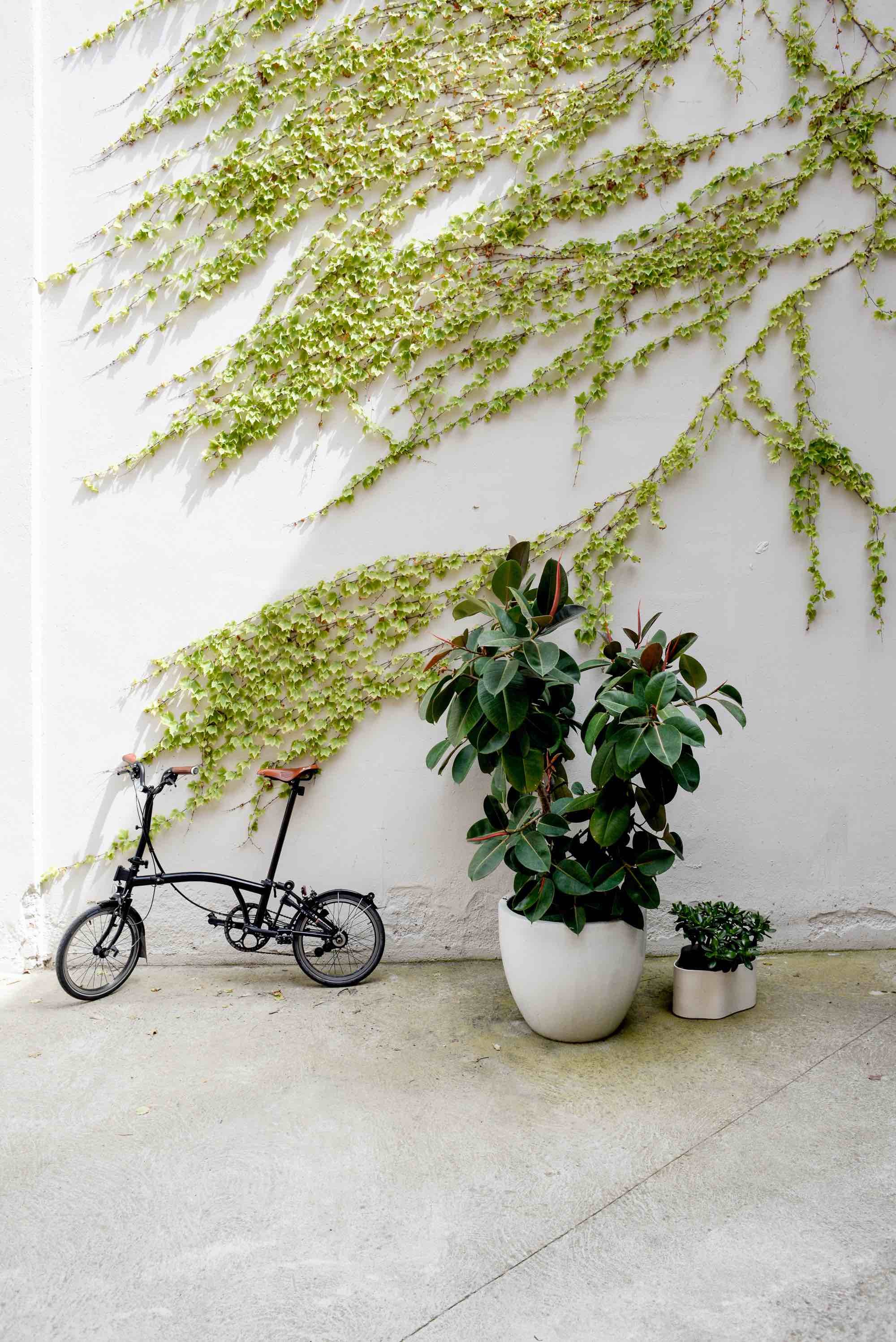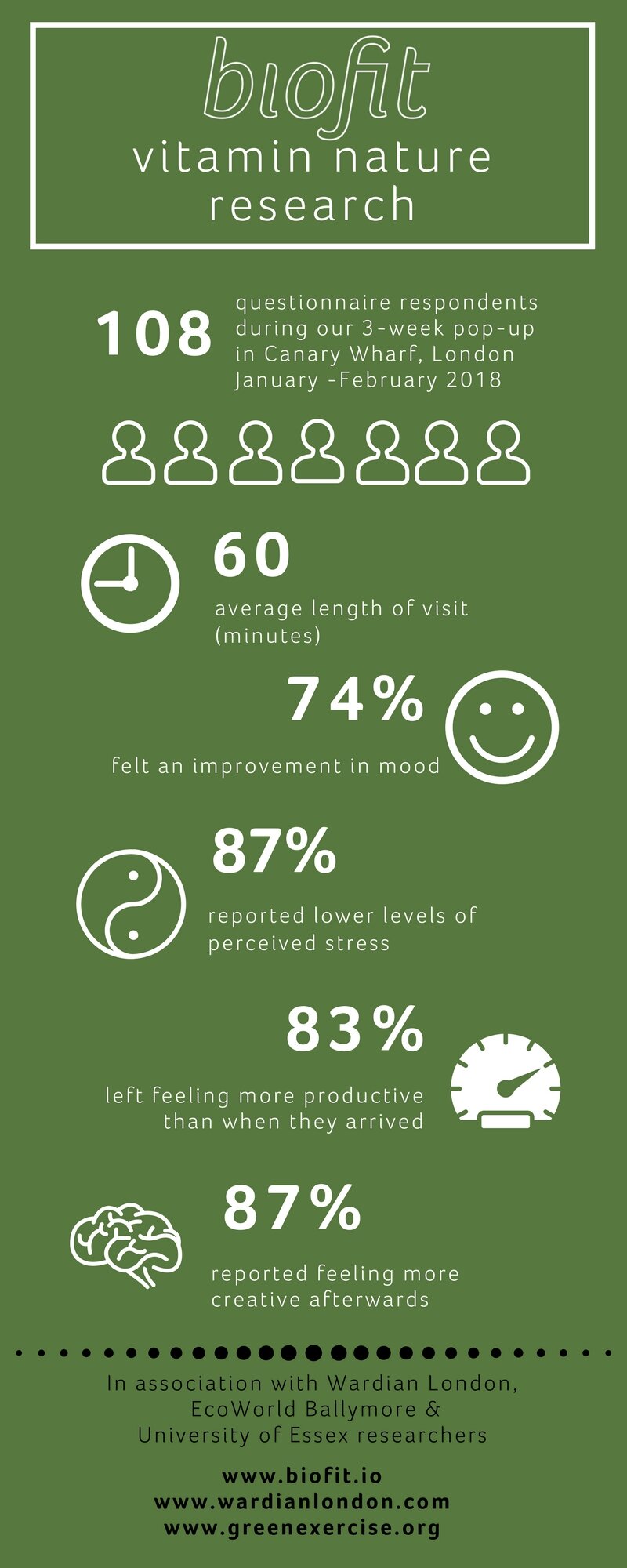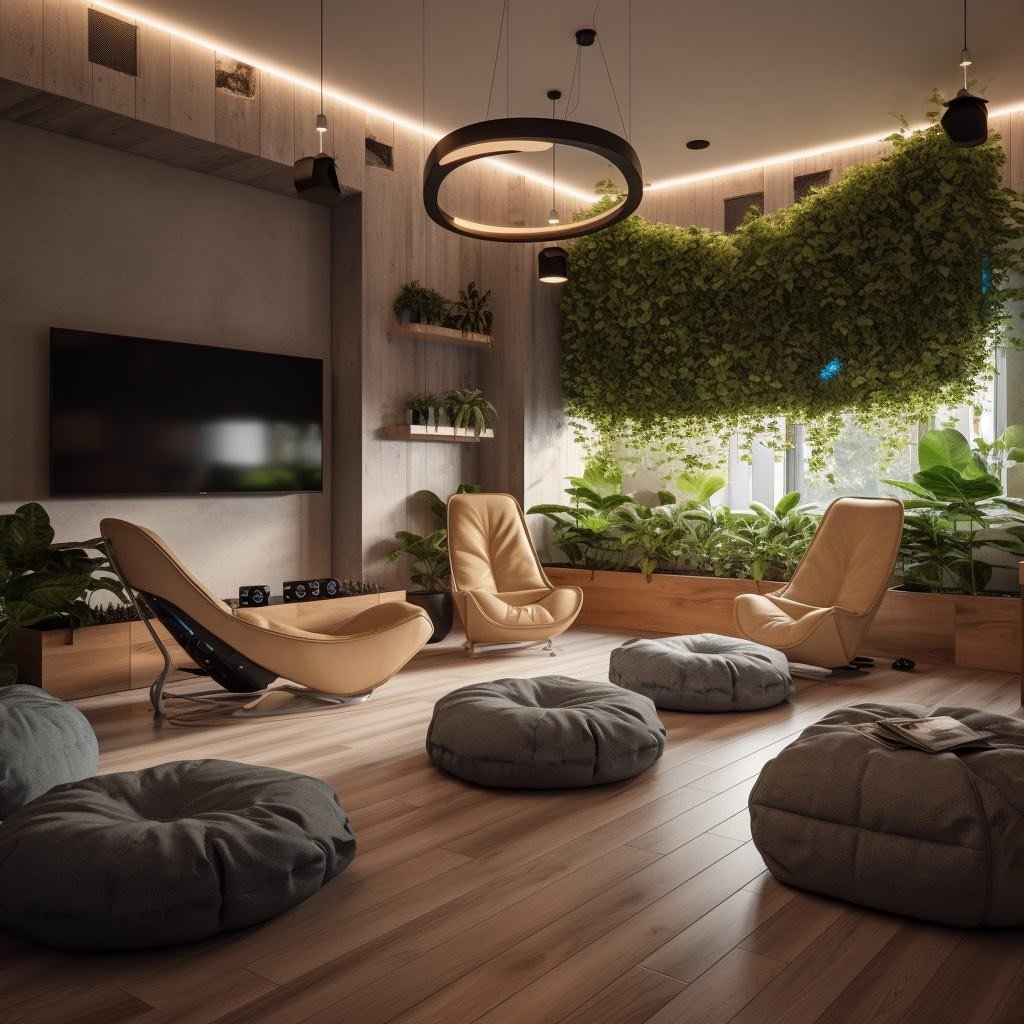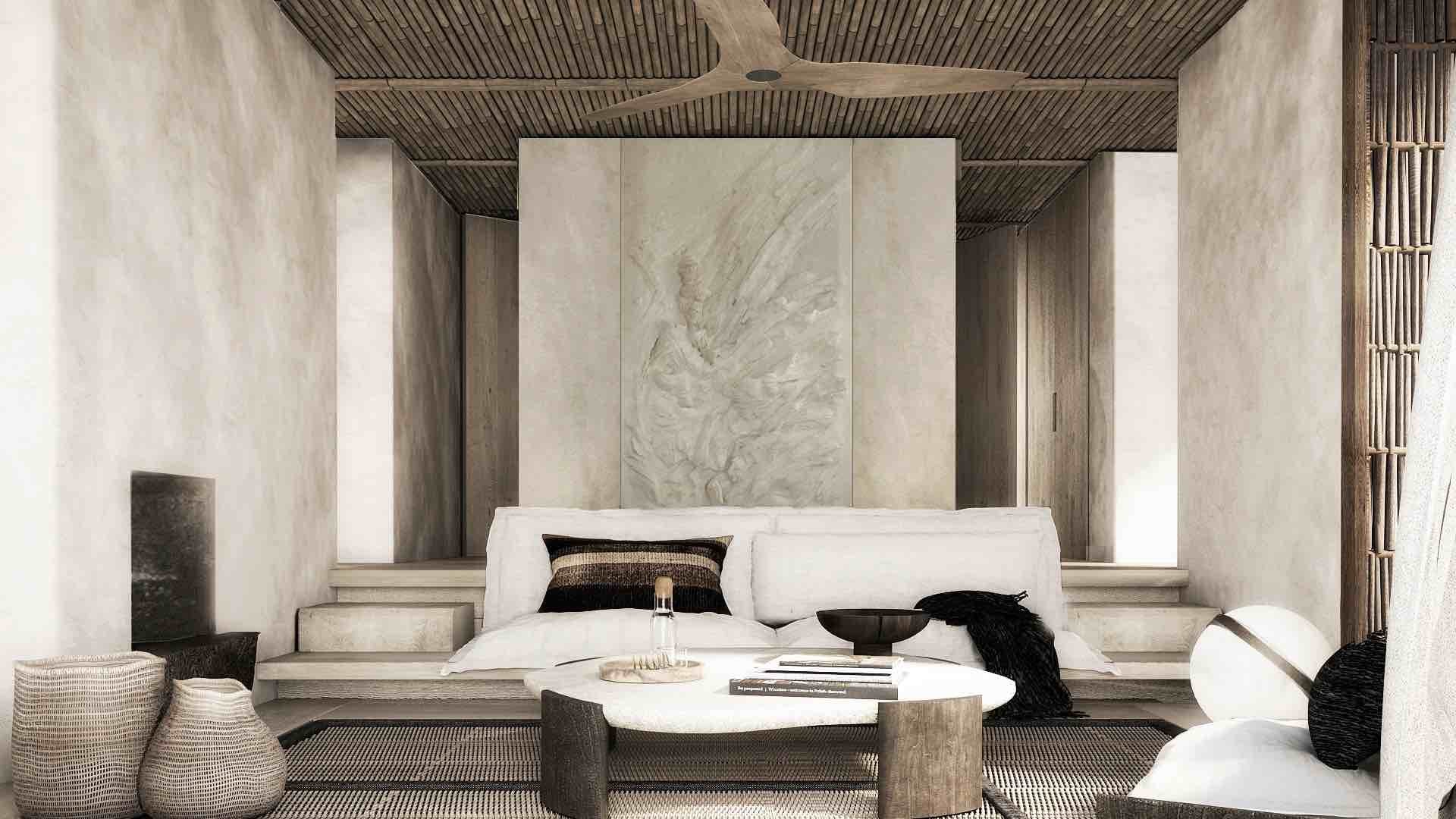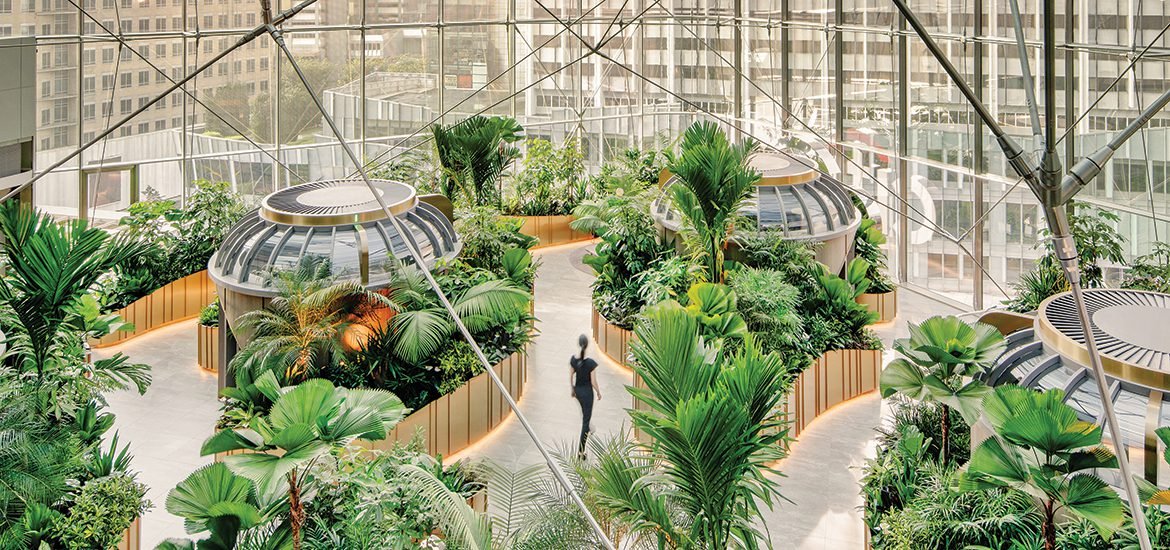What is biophilic design and the biophilia hypothesis?
Urbanization and life in dense city centres brings with it a concomitant risk of a disconnect from nature on one level and a cascade of negative impacts on the environment on another. To counter-balance this trend, biophilic design proposes a realignment of priorities by bringing the outside world back into our urban planning, architecture and interiors.
By integrating both sustainability and wellbeing, green building design and healthy building design concepts, this biophilia hypothesis led strategy offers a bridge between the artificial dichotomy of ‘People’ on one side and ‘Planet’ on the other.
On the basis that we cannot act on one without inevitably acting on the other, a nature-centric approach provides a vision of future buildings and interiors that nudges us considerably closer to a state of harmony with nature, as per all of our evolutionary history up until the industrial age.
Why do we need biophilia in buildings and interiors?
City living often equates to a disconnect between our daily existence and nature, with many of us now spending 80-90% of our lives indoors.
Whereas once our own health and that of the natural environment we inhabited were inextricably linked, it is all too easy to ignore that dynamic when our days are spent between our home, office, school, gym, restaurants and so on… i.e. indoors most of the time!
Indeed, the disconnect has been more extreme and more damaging than any of us could have foreseen, with climate change being only the most prominent manifestation of this new state of affairs.
Only now are we truly coming to appreciate the positive impact this nature exposure, previously taken for granted, can have on our mental and physical wellbeing, or rather - what happens when we deprive ourselves of it (this is the essence of the biophilia hypothesis)
what are benefits of biophilic design?
The main benefits of biophilic design, from our perspective as healthy building and wellness interior consultants, can be collectively grouped into three main categories, specifically spending time in nature has been shown to:
reduce anxiety and stress, lowering blood cortisol levels
increase cognitive function, concentration and memory
enhance positive mood states, promoting a sense of vitality and purpose
Evidence-based biophilic design in architecture and interiors simply harnesses these scientifically proven insights to bring nature back into our built environment, inviting the outside world in once more via natural materials, colours, patterns and shapes.
Best examples of biophilic design research studies
1.biophilic design benefits - reduction in stress and anxiety
Vegetation can reduce stress, increase healing through stimulation of nature views and accessibility (Bratman).
Biophilic elements increased physiological stress recovery (lowered blood pressure), reduced anxiety, lowered heart rate (Yin, Dec 2019)
The Stress Reduction Theory (SRT) (Ulrich/ Jimenez) states that stress is reduced in nature due to our natural affinity and comfort with the natural world
Increased healing/recovery rates due to lower stress (Kaltenegger, ch 13). Views of vegetation has been proven to decrease hospital stay times and increase healing (related to stress/pain levels)
Exposure to natural light increases a neurotransmitter in the body called serotonin, which increases happiness (Kaltenegger ch. 13)
Research shows that exposure to the natural world can reduce negative thought and rumination (Bratman)
Two groups, one walked in nature one on a busy street
Those in nature: increase in positive thought, decrease in negative thought/rumination (the part of the brain linked to depression), decrease in stress/anxiety
Biophysical services (if larger scale/parks etc.)
The physical changes that nature creates causes benefits to humans (ex: if more parks, people may be more encouraged to go on a run near their house and will cause decrease in mental disorders, rumination, obesity, etc).
2. biophilic design benefits - increase cognitive function, concentration and memory
Improved memory, cognitive performance in office setting in VR (Aristizabal) in a study involving three groups over a 10-week Virtual Reality open office biophilic design study. Working memory and cognitive performance improved in all biophilic design conditions compared to baseline.
Lower levels of absenteeism/higher productivity levels (Kellert) when daylight is incorporated into office and school buildings
Student test scores increase, lower dropout rate (Kaltenegger ch. 13). In school buildings with increased natural light, students test scores on average rise between 7-25% due to increased cognitive capacities.
Attention Restoration Theory (ART) (Kaplan/Jimenez) states that spending time in nature causes humans to refresh their mental state, overcome mental fatigue and improve mental focus and attention
Increased memory and creativity as exposure to green spaces can positively affect brain development in children through creativity/discovery/risk taking opportunities
3. biophilic design benefits - enhance positive mood states, promoting a sense of vitality and purpose
Exposure to natural light increases a neurotransmitter in the body called serotonin, which increases happiness (Kaltenegger ch. 13)
Research shows that exposure to the natural world can reduce negative thought patterns (Bratman). Two groups were assessed, one walked in nature and the other on a busy street, the former experienced an increase in positive thought patterns and a decrease in negative thought patterns (interestingly, this is the same part of the brain linked to depression), whilst also stated they felt a decrease in overall stress levels and anxiety.
Biophysical services (if larger scale/parks etc.). The physical changes that nature creates causes benefits to humans (ex: if more parks, people may be more encouraged to go on a run near their house for example, thereby reducing obesity risks, cardiovascular disease, and so on).
Benefits of nature exposure <> benefits of biophilic design
Biophilic design studies are slowly becoming more common (see our own studies into the benefits of biophilic design here) but much of what is out there is still based on reviewing a number of key research studies done a while ago.
There is considerably more information available on how nature exposure positively affects humans, and a lot can be inferred from these studies as the properties of nature exposure are similar, and correlations can be reasonably inferred.
Biophilic design studies are slightly different than nature-based studies but there is considerable overlap, for example
window/nature views could be included in both
natural light/sun exposure could be included in both
greenery/vegetation could be included in both (although likely on a smaller scale with biophilic design)
Direct nature has been proven to have the most wellness benefits but indirect exposure (ie, looking at a picture of a tree) still has health benefits too - this is how a lot of examples of biophilic design can justifiably claim to be wellness spaces even if they do not contain any direct biophilia (i.e. living plants or trees).
This does however mean that white blood cells known as Natural Killer (NK) cells may not increase with some examples of biophilic design interiors as there are likely far fewer or even no phytoncides in those spaces that a real forest provides in abundance (see forest bathing research for more on this).
Tsao, Tsung-Ming et al. “Health effects of a forest environment on natural killer cells in humans: an observational pilot study.” Oncotarget vol. 9,23 16501-16511. 27 Mar. 2018, doi:10.18632/oncotarget.24741. https://www.ncbi.nlm.nih.gov/pmc/articles/PMC5893257/
Examples of biophilic design sources referenced above:
Aristizabal, Sara, et al. “Biophilic Office Design: Exploring the Impact of a Multisensory Approach on Human Well-Being.” Journal of Environmental Psychology, Academic Press, 9 Sept. 2021
Bratman, Gregory, and Gretchen Daily. The Benefits of Nature Experience: Improved Affect and Cognition. Tech. Vol. 138. Stanford: n.p., 2015. Landscape and Urban Planning. Stanford University Libraries. Web. 24 Oct. 2016.
Jimenez, Marcia P. et al. “Associations Between Nature Exposure and Health: A Review of the Evidence.” International Journal of Environmental Research and Public Health 18.9 (2021): 4790. Crossref. Web.
**Note**: this source was used for ART/SRT info (although original theory names given credit above)
Kaltenegger, Ingrid. "Integration of Mother Nature into Smart Buildings." Integration of Nature and Technology for Smart Cities. By Helen Santiago Fink. Switzerland: Springer International, 2016. ch. 13,18. Print.
Kellert, Stephen R., and Bill Finnegan. "Biophilic Design-The Architecture of Life Viewing Guide." (n.d.): n. pag. Biophilic Design. Tamarack Media and Stephen Kellert. Web. 7 Dec. 2016.
Yin, Jie, et al. “Effects of Biophilic Interventions in Office on Stress Reaction and Cognitive Function: A Randomized Crossover Study in Virtual Reality.” Wiley Online Library, John Wiley & Sons, Ltd, 11 Sept. 2019, https://onlinelibrary.wiley.com/doi/10.1111/ina.12593.
Yin, Jie, et al. “Effects of Biophilic Indoor Environment on Stress and Anxiety Recovery: A between-Subjects Experiment in Virtual Reality.” Environment International, Pergamon, 24 Dec. 2019, https://www.sciencedirect.com/science/article/pii/S0160412019336347?via%3Dihub.
a restorative green space for EcoWorld Ballymore in London, UK
biofilico’s biophilic design research study for a residential developer
There is a growing body of evidence behind biophilic design but there remains more work to do.
By way of a contribution to this, we created a scientific research project with a team of experts from the University of Essex (UK) on the impact of biophilic indoor environments on human health and wellbeing.
Real estate developer EcoWorld Ballymore is behind the biophilic residential development The Wardian in London, UK.
They asked us to take over their Wardian Case greenhouse for a month to deliver a consumer research study into the impact on mental wellbeing of spending time in this highly biophilic environment.
A total of 108 locals spent an average of 60 minutes with us, benefiting from restored energy levels, a renewed sense of calmness, improved mood and greater cognitive function. See the project video, summary data and publicly released results below.
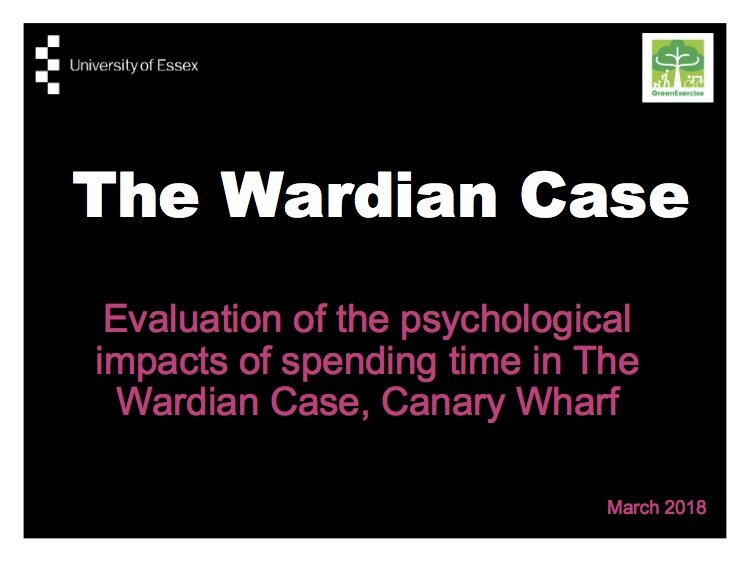
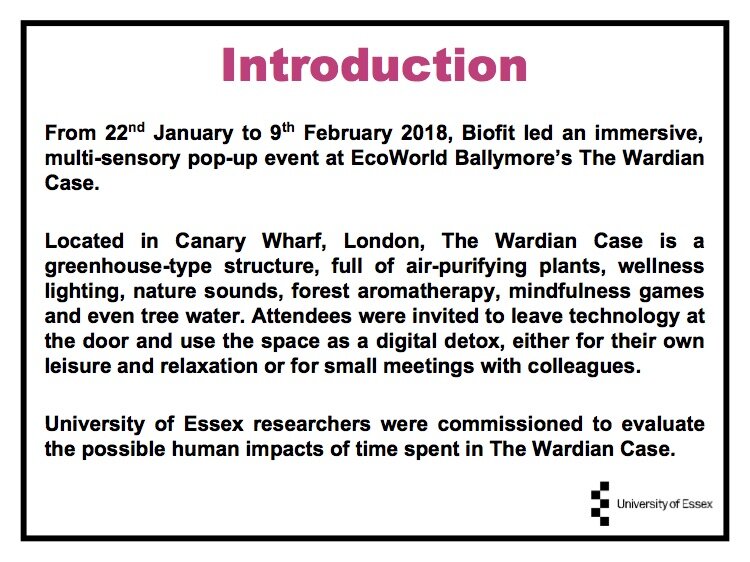

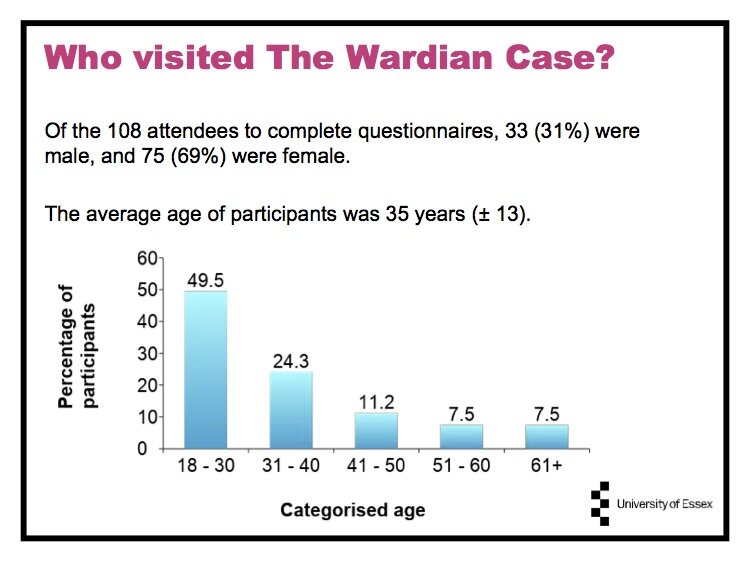

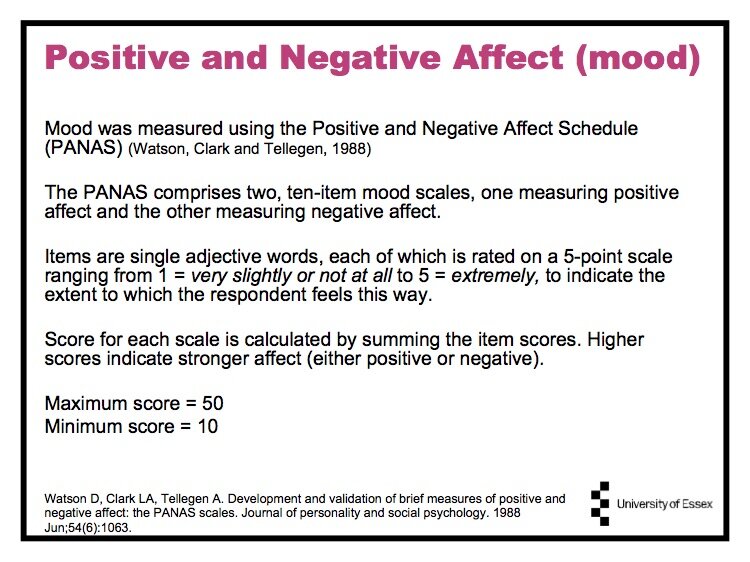
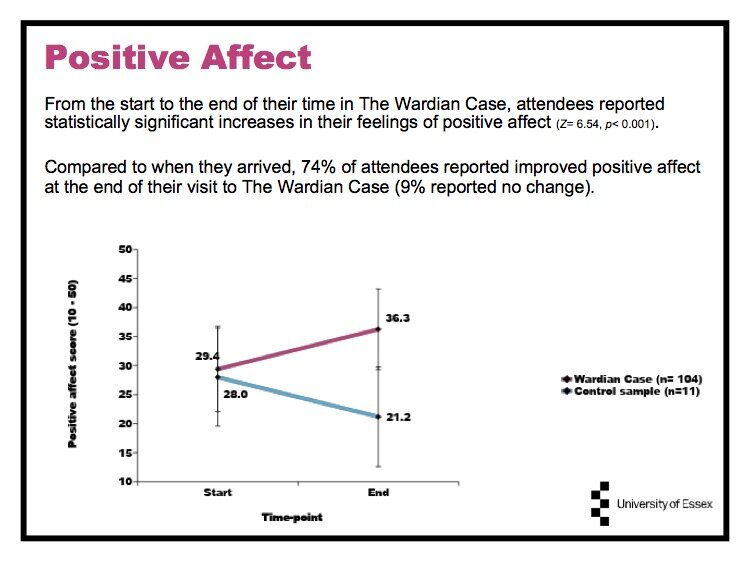
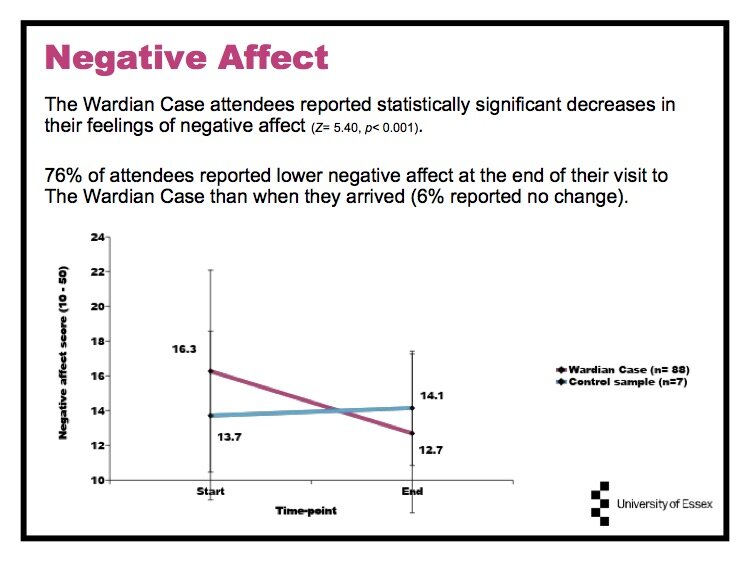
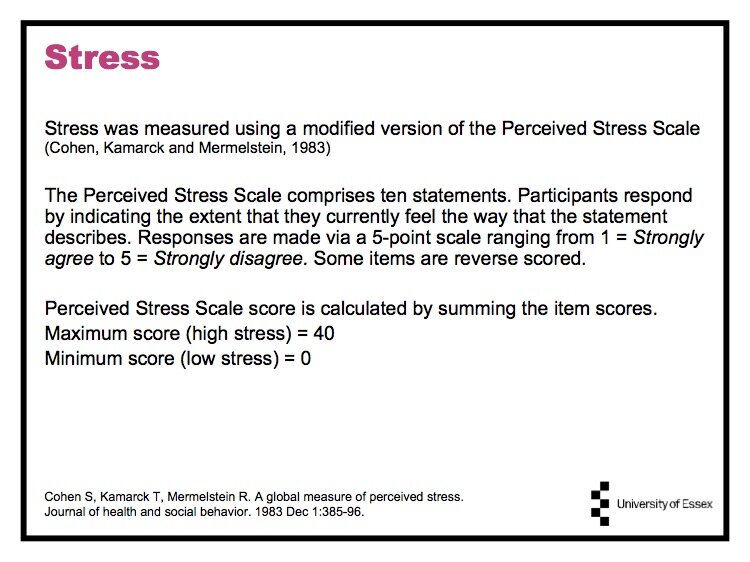
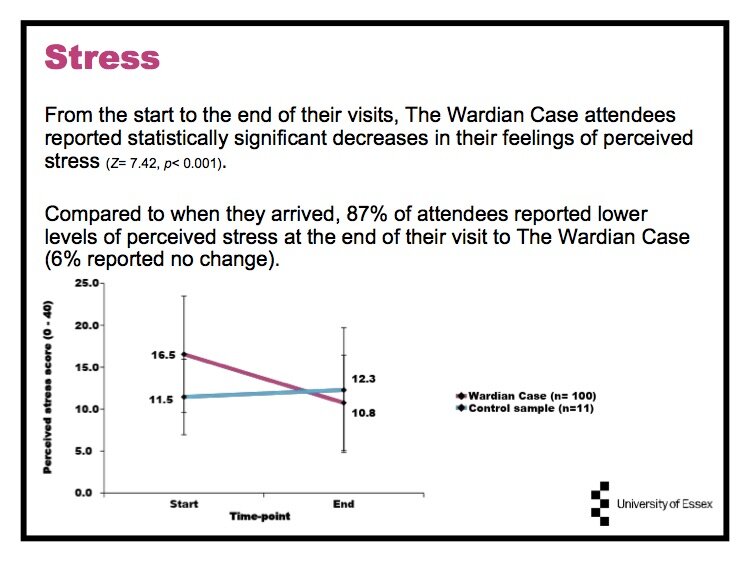
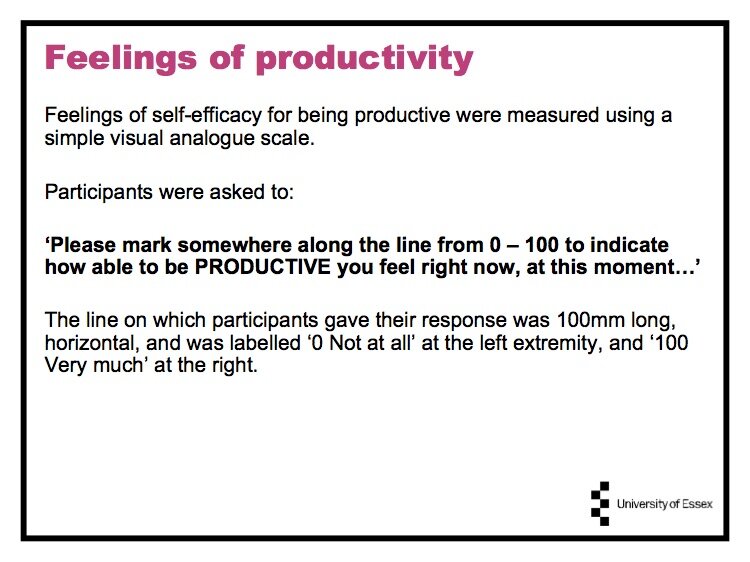
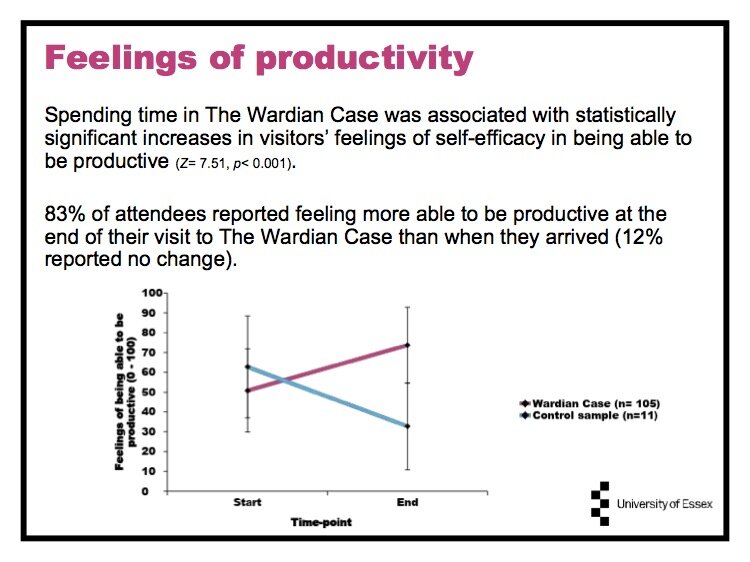
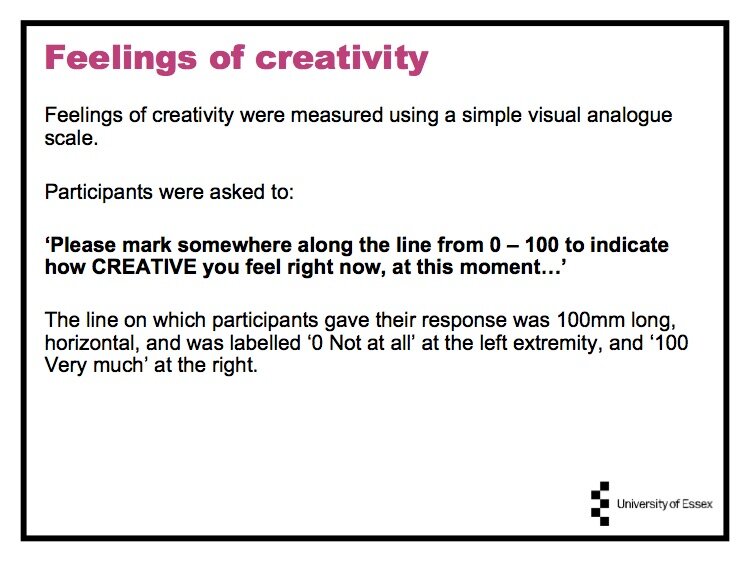
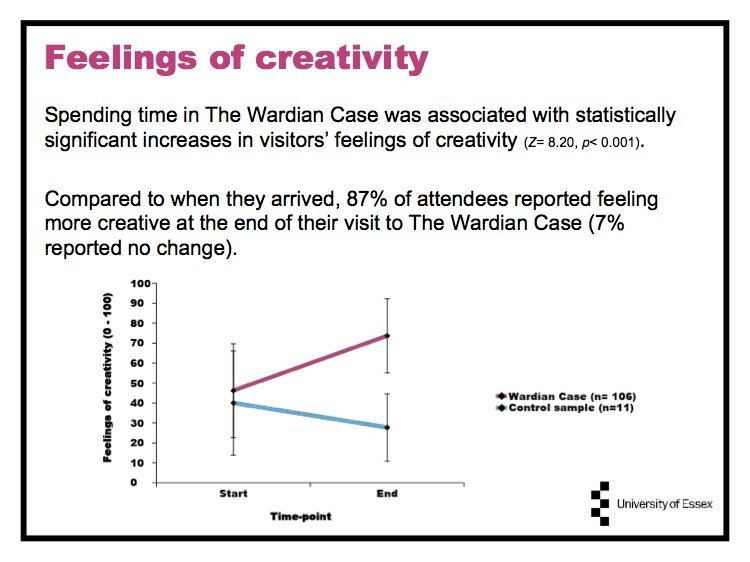
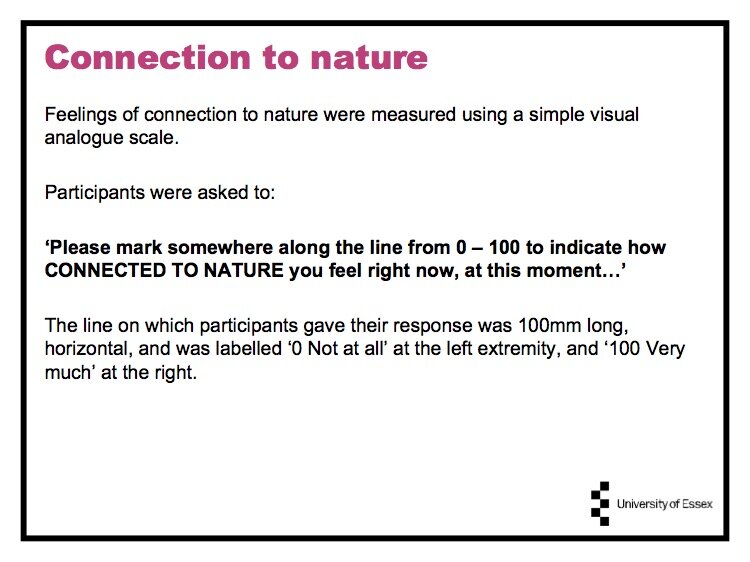
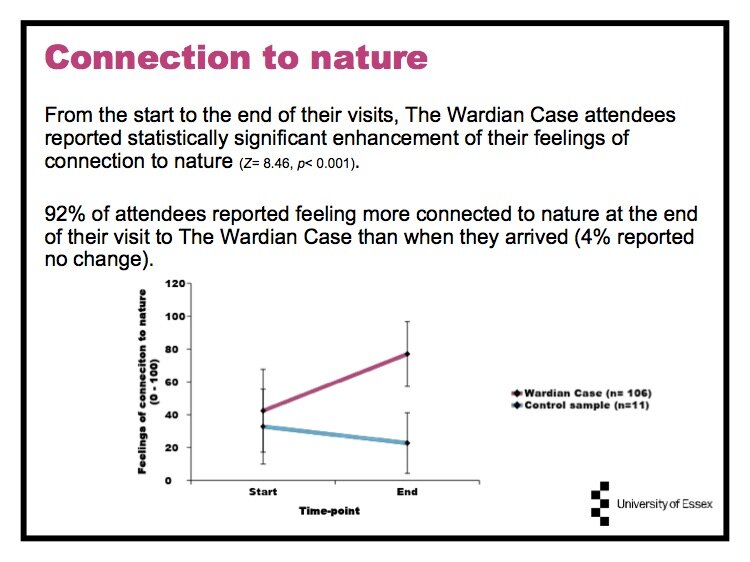

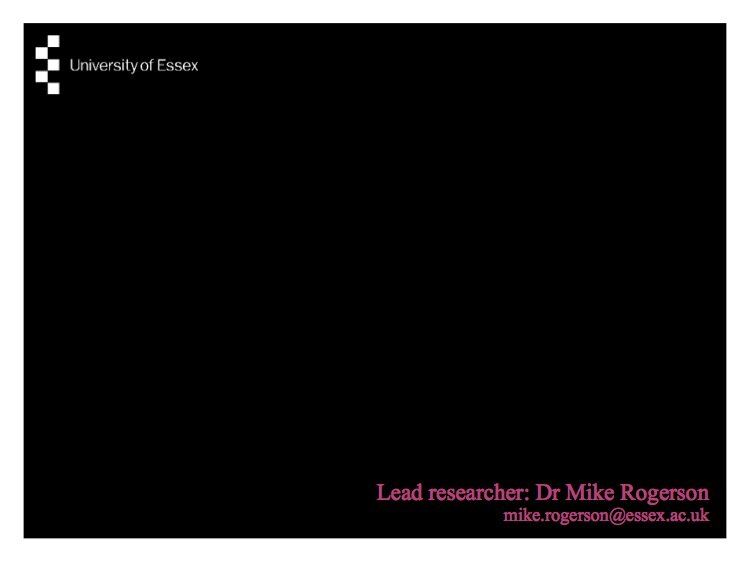
If you are interested in us delivering a similar research study for you, contact us via email!
Read the full recharge Room video script here
The story of The Wardian is built on the history of Nathaniel Ward and his Wardian Case which is displayed inside this remarkable greenhouse built at the visitor center.
biophilic design
Here, we're really trying to combine both biophilic and healthy design principles in one. So creating a green space in an urban environment is this interesting sort of yin yang.
We believe we can still provide the positive mental wellness effect of nature, even though we're surrounded by a dense urban environment here in Canary Wharf, London.
the recharge room experience
We really encourage visitors to turn their phones off, go for a complete digital detox experience inside this recharge room so they can just disconnect for a little while from technology and focus entirely on their senses, absorbing the space for what it is. This happens quite intuitively, it's not something that you need to try to hard at.
We simply invite people to come in and be open to that experience, rather than closing themselves off by focusing on the phone or some other distraction.
restorative green space
Come here with your clients and sit in the restorative green space to experience what it's like to spend time in a biophilic Vitamin Nature space. This is the environment, which we're creating within the public areas of the Wardian building.
Our idea is - we invite people to use the space, to come on their lunch hour, to have a quiet hour with themselves or they can go to space out and use it for a brainstorming session or for a team meeting.
biophilia for wellbeing
Again, the idea being that the restorative room full of biophilia allows people to focus on what they are required to do while they're here which may be nothing - which is beautiful in itself - or possibly come with a creative task in hand.
And by taking away the technology and distractions, we hope that that allows greater mental focus for them and ultimately more productivity as well.
+
Useful web links to research about biophilia, workplace wellness, green offices and the health benefits of nature
An Ear For Nature by Terrapinn, Browning & Walker (2019)
Healthy Office - why wellness is the new green, The Fifth Estate (2017)
BUPA - Workplace wellness & Mental Health report
Nature Design for Better Health, Roger S. Ulrich
The Economics of Biophilia, Terrapinn
Green is Good For You, American Psychological Association
Biophilic Design in the Workplace, Prof. Cary Cooper
[Going Green In the Workspace][7], Prof. Cary Cooper
[Green Offices Keep Staff Healthy & Happy][8], World Green Building Council
[Forest Bathing Enhances Human Natural Killer Activity and Expression of Anti-cancer Proteins][9], Tsunetsugu Y1, Park BJ, Miyazaki Y
[The Cost Effectiveness of Addressing Public Health Priorities Through Improved Access to the Natural Outdoors][10], Valuing Nature, 2017
[The Importance of Green Space for Mental Health][11], Jo Barton & Mike Rogerson, 2017
[A Review of the Benefits of Nature Experience: More Than Meets The Eye][12]. Lara S. Franco, Danielle F. Shanahan, and Richard A. Fuller (2017)
[Green Mind Theory: How Brain-Body-Behaviour Links into Natural and Social Environments for Healthy Habits][13]. Pretty, Rogerson & Barton (2017)
[The Health Benefits of Urban Nature: How Much Do We Need?][14] Shanahan et al, BioScience (2015)
[40-second Green Roof Views Sustain Attention: The Role of Micro-Breaks in Attention Restoration][15], Kate Lee, e al (2015)
[Occlusion of sight, sound and smell during Green Exercise influences mood, perceived exertion and heart rate][16], Wooller, J. J., Barton, J., Gladwell, V. F., & Micklewright, D. (2015)
[The relationship between nature connectedness and happiness][17], Colin A. Capaldi, Raelyne L. Dopko, and John M. Zelenski
[The great outdoors: How a green exercise environment can benefit all.][18] Gladwell VF, Brown, DK, Wood CJ, Sandercock GR and Barton JL (2013)
[Therapeutic effect of forest bathing on human hypertension in the elderly][19].Mao G.X., Cao, Y.B., Lan, X.G., He, Z.H., Chen, Z.M., Wang, Y.Z., Hu, X.L., Lv, Y.D., Wang, G.F., Yan, J. (2012).
[Does Participating in Physical Activity in Outdoor Natural Environments Have a Greater Effect on Physical and Mental Well-being than Physical Activity Indoors?][20] A Systematic Review. Thomson Koon J, Boddy K, Stein K, Whear R, Barton J et al (2011).
[What is the best dose of nature and green exercise for improving mental health][21]. A multi-study analysis. Barton J and Pretty, J. (2010)
[What Is the Best Dose of Nature and Green Exercise for Improving Mental Health.][22] Barton, J. & J. Pretty (2010)
[Green Exercise in the UK countryside: Effects on health and psychological well-being, and implications for policy and planning.][23] Pretty J, Peacock J, Hine R, Sellens M, South N et al (2007).
[Physiological Effects in Humans][24] Induced by the Visual Stimulation of Room Interiors with Different Wood Quantities, Tsunetsugu, Y., Y. Miyazaki, & H. Sato (2007).
Greenspace, urbanity, and health: how strong is the relation? Maas, J., Verheij, R., Groenewegen, P., de Vries, S., Spreeuwenberg, P. (2006).
[Shinrin-yoku (forest-air bathing and walking) effectively decreases blood glucose levels in diabetic patients][25]. Ohtsuka, Y., Yabunaka, N., Takayama, S. (1998).
[7]: [8]: https://www.worldgbc.org/news-media/green-offices-keep-staff-healthy-and-happy-are-improving-productivity-boosting-businesses [9]: https://www.ncbi.nlm.nih.gov/pubmed/19585091 [10]: https://valuing-nature.net/sites/default/files/documents/Reports/Naturally_healthy/EKN%20Naturally-Healthy-Report-Final-96dpi.pdf [11]: https://www.ncbi.nlm.nih.gov/pmc/articles/PMC5663018/pdf/BJPI-14-79a.pdf [12]: https://www.ncbi.nlm.nih.gov/pmc/articles/PMC5580568/ [13]: http://www.mdpi.com/1660-4601/14/7/706/htm [14]: https://watermark.silverchair.com/biv032.pdf [15]: https://www.sciencedirect.com/science/article/abs/pii/S0272494415000328 [16]: http://europepmc.org/article/med/26600402 [17]: https://www.ncbi.nlm.nih.gov/pmc/articles/PMC4157607/ [18]: https://static1.squarespace.com/static/56e9367020c64742fe062659/t/56f1267427d4bd8d421791a7/1458644598728/The+great+outdoors+how+a+green+exercise.pdf [19]: https://www.sciencedirect.com/science/article/pii/S0914508712001852 [20]: https://static1.squarespace.com/static/56e9367020c64742fe062659/t/56fd17fe8259b5ed81da67d2/1459427335466/thomson+coon+paper.pdf [21]: https://static1.squarespace.com/static/56e9367020c64742fe062659/t/56fd16b32fe131ba2aaed56a/1459427000752/the+best+dose+of+Ge+for+mental+health.pdf [22]: https://pubs.acs.org/doi/abs/10.1021/es903183r [23]: https://static1.squarespace.com/static/56e9367020c64742fe062659/t/56fd16022fe131ba2aaed188/1459426836832/Implications+for+-+CRN+Study.pdf [24]: https://paperity.org/p/78675292/physiological-effects-of-wood-on-humans-a-review [25]: https://www.ncbi.nlm.nih.gov/pubmed/9531856
